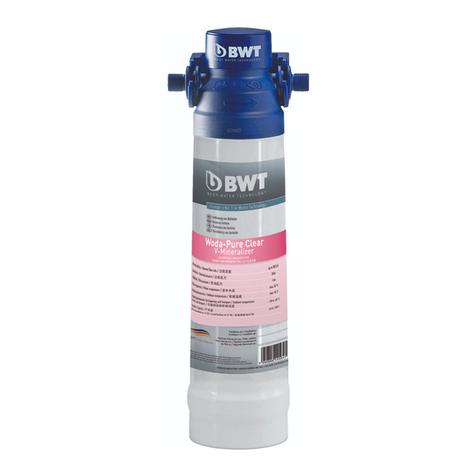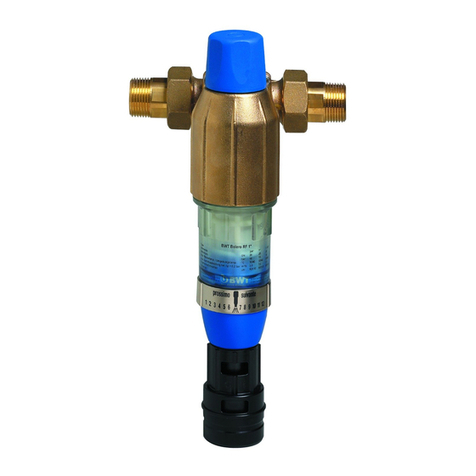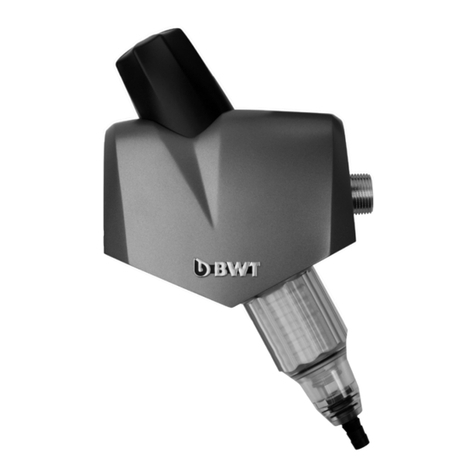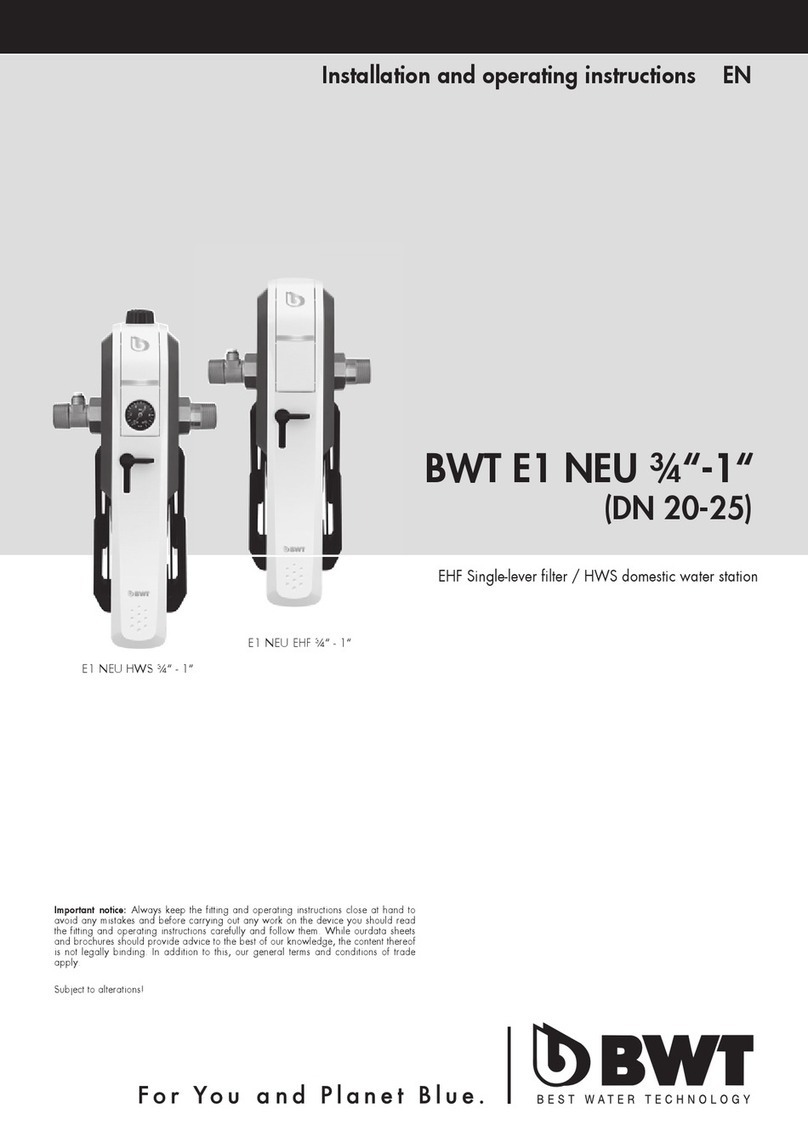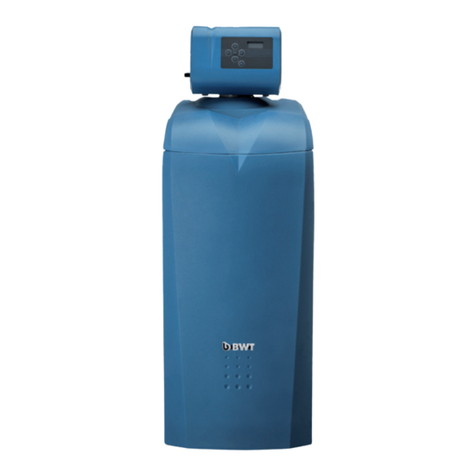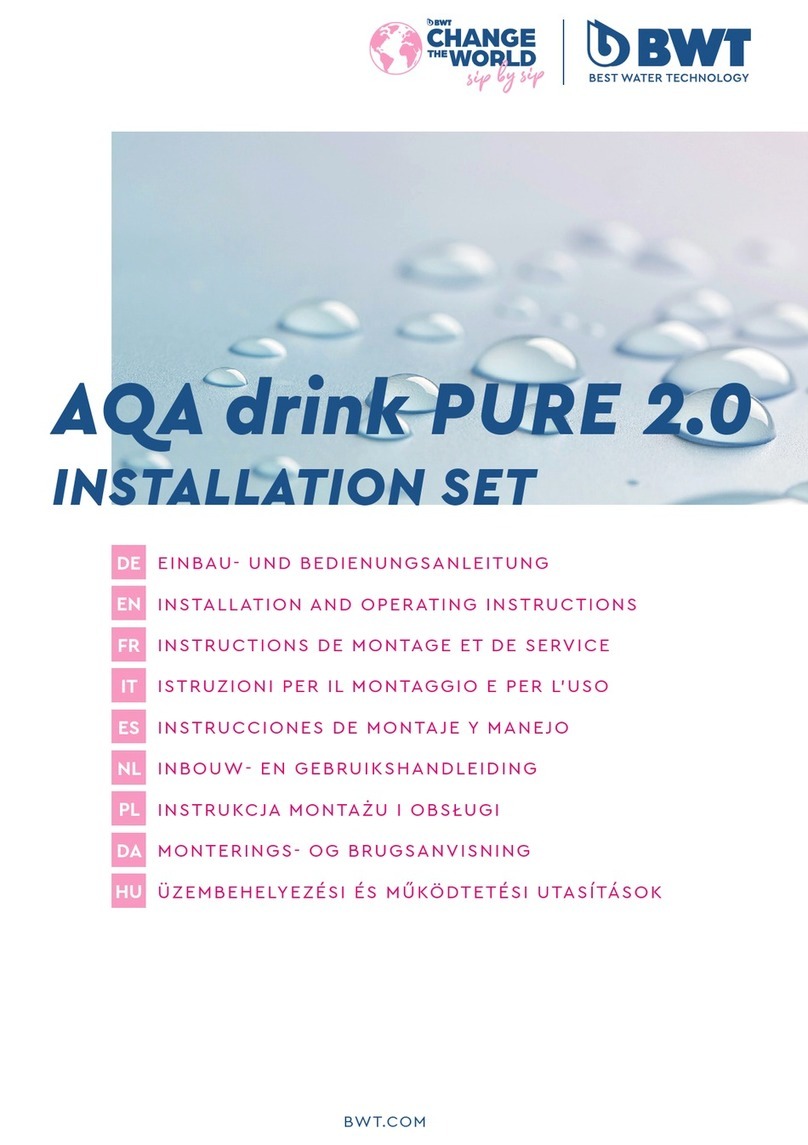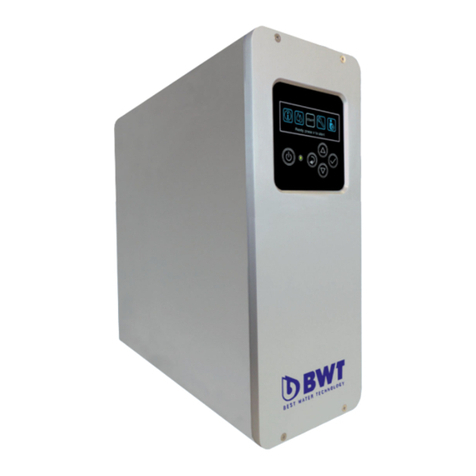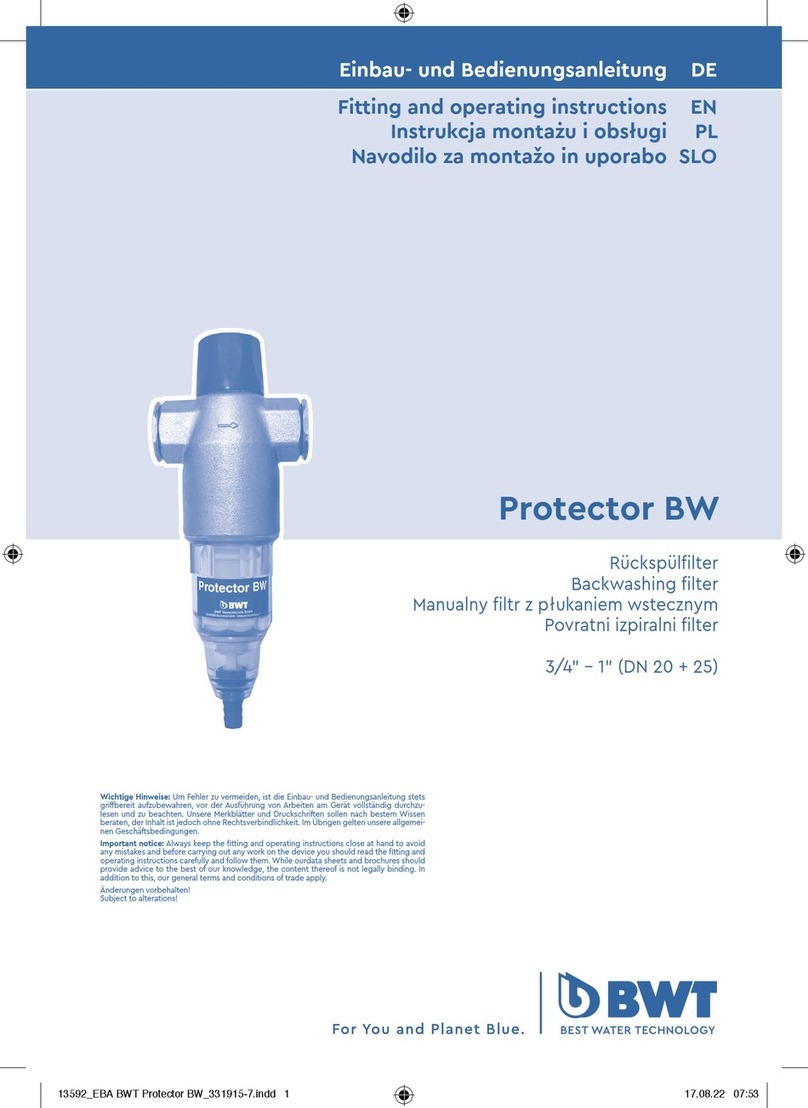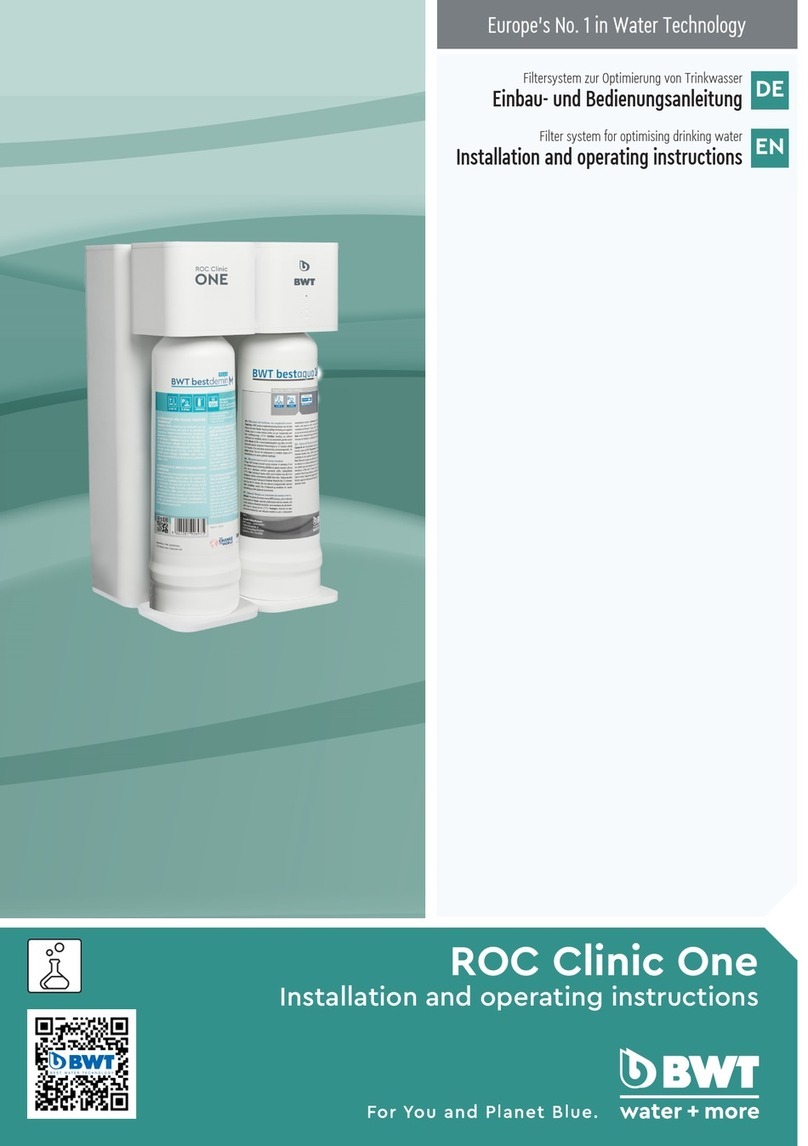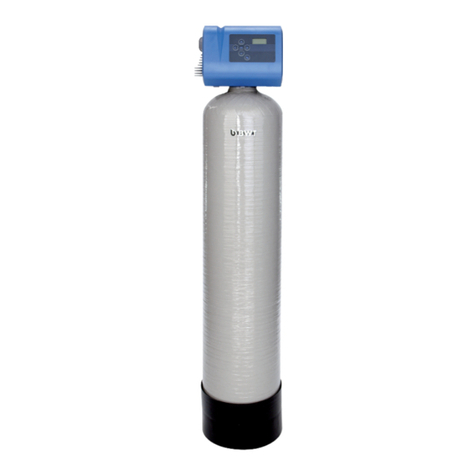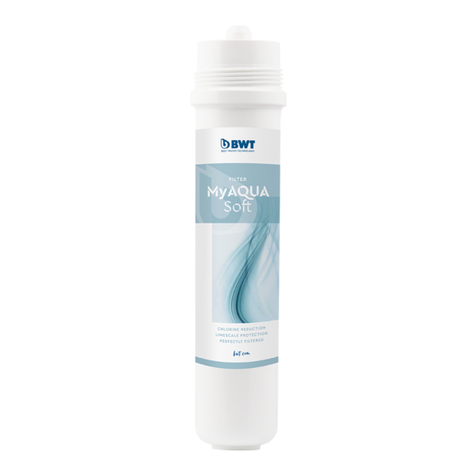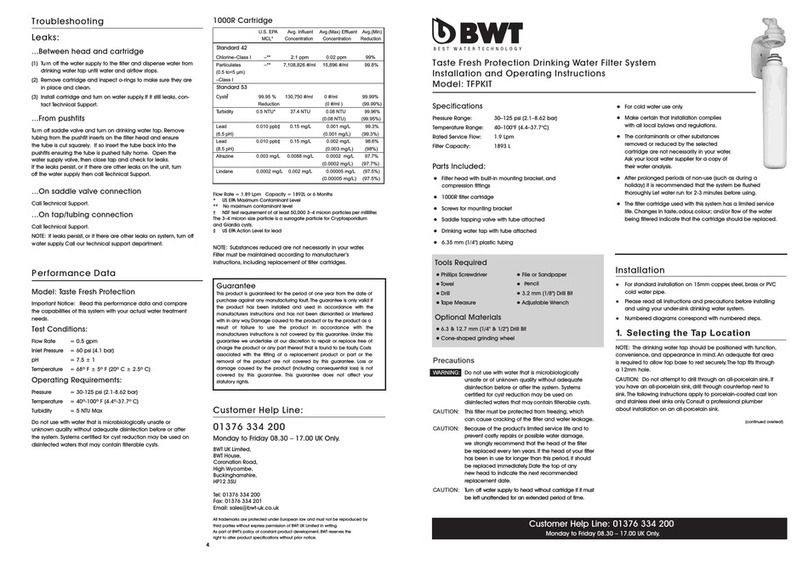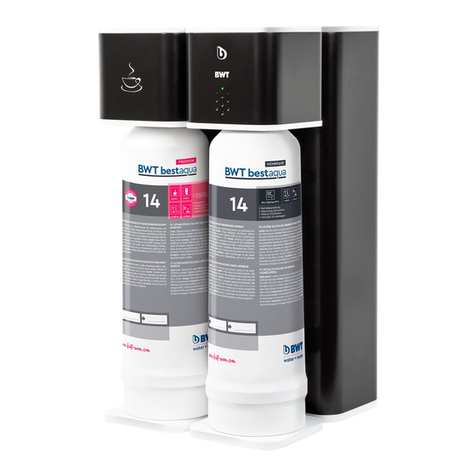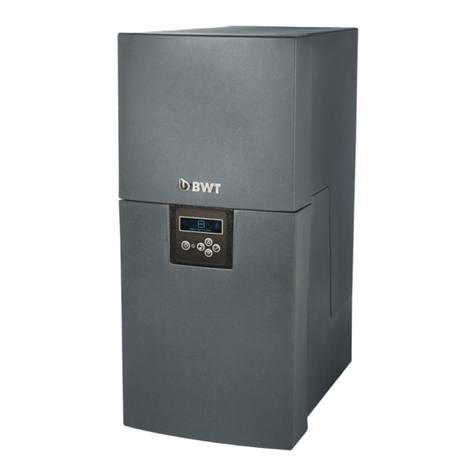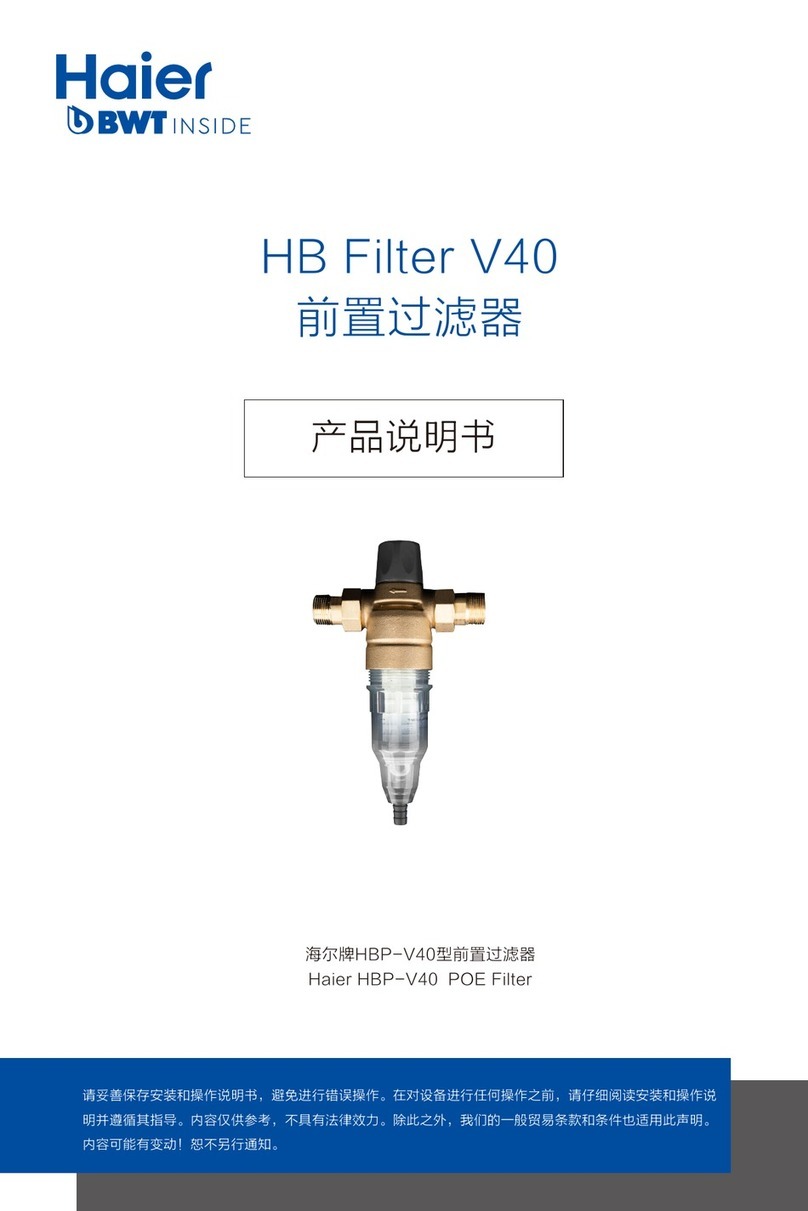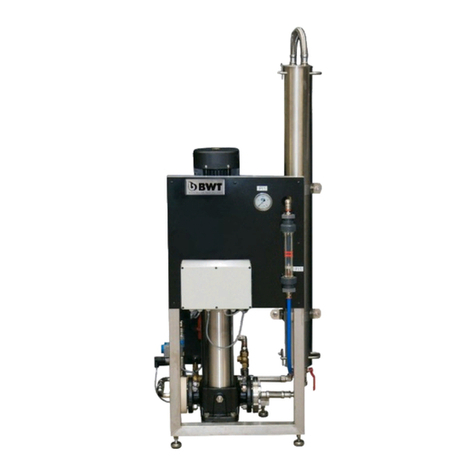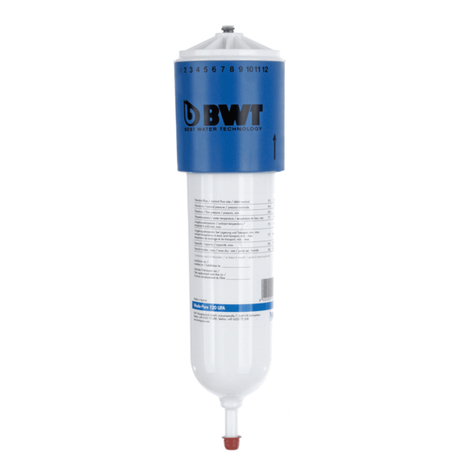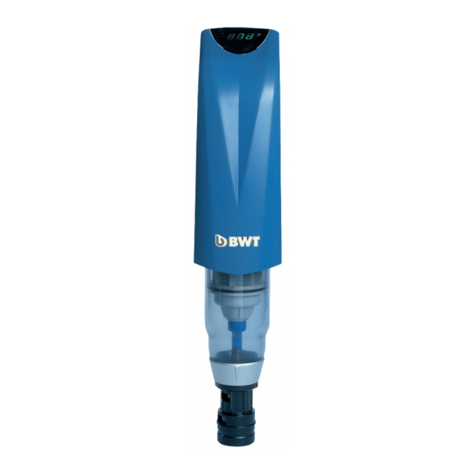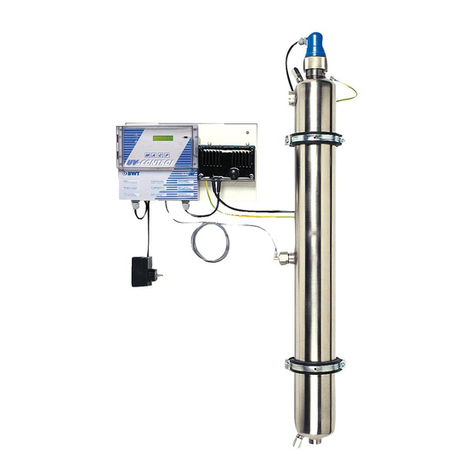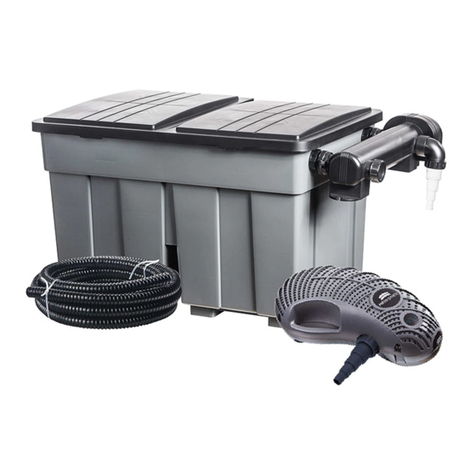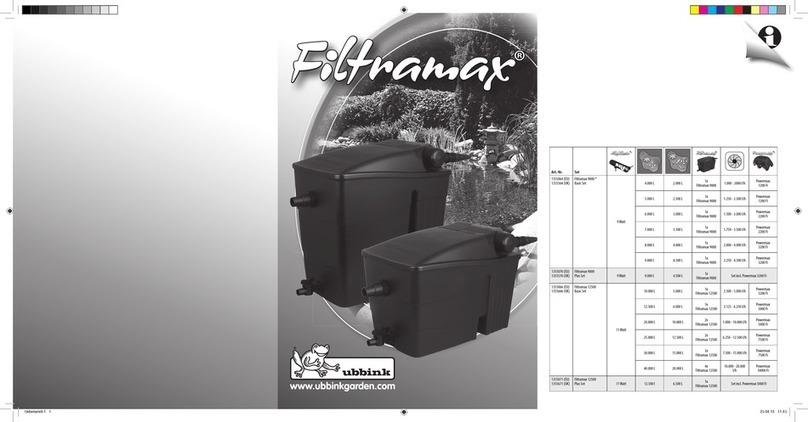
EN
6
room for installing softening
unit/antiscalant (option) and
possibly a reservoir tank (option).
You must expect 1000 mm extra
height in order to be able to take
out the plant membranes. Also
there shall be room at both sides
of the plant for water
installations, especially you must
consider the outlet drain from the
plant. A resistance must
never occur in those!
Furthermore, there are readings
which have to be made at the
front of the plant, e.g. the flow
meter, manometer, conductivity
meter and alarms.
The front of the plant shall never
be covered up, but must always
be visible.
In case of an error, situations
may arise where either the level
in the reservoir (Option) may
overflow or another form of leak
may occur. There shall always be
a floor drain close to the plant,
so that this water cannot cause
damage.
4. WATER QUALITY
The raw water, which is to be
treated in the BWT PERMAQ®
PRO 2500 plant, must be of
drinking water quality and
contain maximum 500 mg/l TDS.
The raw water may maximum
contain:
Hardness 0.5 dH (can
be obtained by means
of a softening
unit(option))
Fe: 0.05 mg/l
Mn: 0.05 mg/l
Free chlorine 0.1 mg/l
(if higher, install a
carbon filter (option))
Turbidity max. 1.0 NTU
Silt index: 3.0
KMnO4max.: 10 mg/l
Maximum temperature:25 C.
Note! The plant has been
adjusted in our factory to operate
at 10 C .
If you have doubts about the
composition of the raw water,
you should always make a water
analysis.
The plant must be connected to a
raw-water pressure of minimum 3
bar and maximum 6 bar. The
quality of the treated water will
normally be under 20 µS/cm at
10 C.
5. WATER
CONNECTIONS
Note! All water connections
must be in compliance with local
regulations.
For connection of raw water to
the softening unit (option), see the
guide which is enclosed the
softening unit.
Connection of softening to
the RO plant:
Connect soft water to the
connection at the left side of the
plant. The best operating result is
obtained by connecting to
minimum 1 ½" raw water pipe.
In that way you will usually
obtain the necessary pressure
and flow to the plant.
If the raw-water connection is too
small, there is the risk of outages
on the plant due to lacking water
pressure/amount, e.g. when
flushing membranes, when
starting up the plant and a poor
functionality of the softening unit.
Connection of permeate
outflow
The outflow of the RO plant (D)
shall be connected to hold-up
tanks or BWT reservoir (option).
You will benefit by connecting
with 1" flexible pressure hoses.
BWT sell complete assembly kits
for the BWT PERMAQ® PRO
2500- series.
Intake soft
water
Micron filter
(option)
Outflow
concentrate
discharge
Outlet
permeate to
consumption
Connection of drain
(permeate (C)/concentrate
(B))
The permeate and concentrate
outlet can with advantage be
installed with two 25 mm PVC
pipes. Keep in mind that the
permeate drain must be made of
corrosion-proof material.
Permeate and concentrate
outflows are led to the floor drain
in two pipes. These two pipes
may never be united into one
pipe (see figure 1).
Important! The outlet pipe may
not be led all the way down into
the outlet water of the floor drain,
as you will then risk that the
water is sucked back into the
plant by standstill.
Important! A resistance may
never occur in the outlet pipe,
as this will damage the
membrane(s).
Connection of outlet water
from the reservoir pump
(option)
Connect the outlet water with 1"
flexible pressure hose to the
